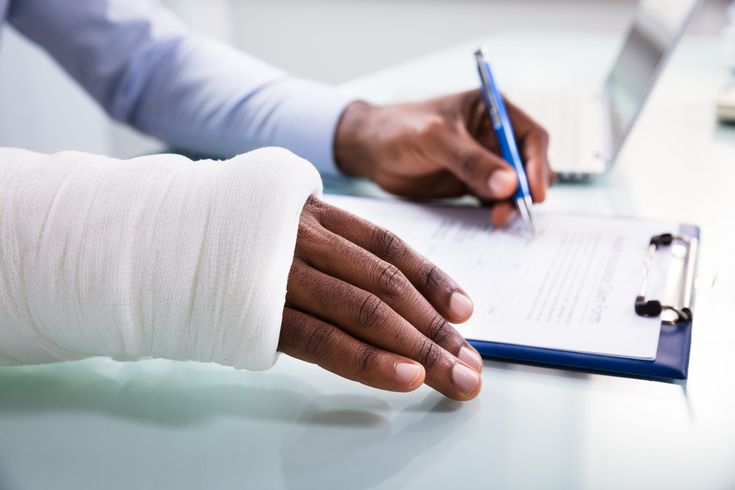2024 Unlock the Secrets to Maximizing Your Personal Injury Settlement

Introduction
In the aftermath of an accident or injury caused by someone else’s negligence, pursuing a personal injury settlement can be a daunting task. However, understanding the intricacies of this legal process is crucial to ensure you receive fair compensation for your losses. This comprehensive guide will walk you through the personal injury settlement journey, from filing a claim to negotiating a favorable outcome.
Understanding Personal Injury Settlement
A personal injury settlement is a legal agreement reached between the injured party (plaintiff) and the party responsible for the injury (defendant or their insurance company). It involves the exchange of compensation for the plaintiff’s losses, such as medical expenses, lost wages, and pain and suffering, in return for dismissing the legal claim against the defendant.
Types of Personal Injury Settlement
There are two main types of personal injury settlement:
- Formal Settlement: This is a legally binding agreement that is typically reached after negotiations between the parties involved or through a mediation process. It outlines the terms of the settlement, including the amount of compensation and any conditions or restrictions.
- Informal Settlement: In some cases, an informal agreement may be reached outside of court, often through direct negotiations between the parties or their representatives. While not legally binding, an informal settlement can still provide a resolution to the dispute.
The Personal Injury Settlement Process
The personal injury settlement process typically involves the following steps:
- Filing a Claim: The first step is to file a claim with the responsible party’s insurance company or initiate a lawsuit if the insurance company is uncooperative or unwilling to negotiate a fair settlement.
- Investigation and Evidence Gathering: Both parties will gather evidence to support their respective cases, including medical records, witness statements, and expert opinions.
- Demand Letter: Your attorney will send a demand letter to the defendant or their insurance company, outlining the details of the claim and the desired compensation amount.
- Negotiations: If the demand is rejected or a counteroffer is made, negotiations will begin between the parties to reach a mutually agreeable personal injury settlement.
- Mediation or Trial: If negotiations fail, the case may proceed to mediation or trial, where a neutral third party (mediator or judge/jury) will evaluate the evidence and determine an appropriate personal injury settlement amount.
- Acceptance or Rejection: Once a settlement offer is made, you have the choice to accept or reject it. If accepted, the case is resolved, and the agreed-upon compensation is paid. If rejected, the case may continue to trial.
Also Read:
https://besraha-news.online/juvenile-crimes-lawyer/
Factors Affecting Personal Injury Settlement Amounts
The amount of compensation awarded in a personal injury settlement depends on various factors, including:
| Factor | Description |
| Severity of Injuries | More severe injuries typically result in higher settlement amounts to cover extensive medical treatment, lost wages, and long-term care. |
| Medical Expenses | All reasonable and necessary medical expenses related to the injury, including future projected costs, should be covered. |
| Lost Wages and Earning Potential | Compensation for lost wages, both past and future, as well as any diminished earning potential due to the injury. |
| Pain and Suffering | Non-economic damages, such as physical pain, emotional distress, and loss of enjoyment of life, are also considered. |
| Liability and Fault | The degree of fault attributed to each party involved can significantly impact the settlement amount. |
| Insurance Policy Limits | Settlement amounts may be capped by the defendant’s insurance policy limits. |
Negotiating a Favorable Personal Injury Settlement
Effective negotiation is key to securing a fair personal injury settlement. Here are some tips to help you navigate this process:
- Gather Solid Evidence: Compile all relevant medical records, bills, wage statements, and other documentation to support your claim and demonstrate the extent of your losses.
- Be Realistic: While you deserve fair compensation, it’s essential to have reasonable expectations based on the specific circumstances of your case.
- Understand the Opposing Party’s Position: Try to understand the defendant’s perspective and any potential weaknesses in their case. This can help you leverage your position during negotiations.
- Seek Professional Representation: Hiring an experienced personal injury attorney can greatly increase your chances of securing a favorable personal injury settlement. They have the legal expertise and negotiation skills to advocate for your best interests.
- Be Patient and Persistent: Negotiations can be lengthy and frustrating, but staying patient and persistent can often lead to a better outcome.
- Consider Alternative Dispute Resolution: If negotiations stall, mediation or arbitration may provide a more efficient and cost-effective resolution than going to trial.
By understanding the personal injury settlement process, being prepared with solid evidence, and effectively negotiating with the help of an experienced attorney, you can increase your chances of receiving fair compensation for your injuries and losses.
Remember, every case is unique, and the outcome of a personal injury settlement will depend on the specific circumstances involved. It’s essential to seek professional legal guidance to navigate this complex process and protect your rights.
Sources:
- Source 1: “Personal Injury Settlement: What You Need to Know” – FindLaw
- Source 2: “How to Negotiate a Personal Injury Settlement”
- Source 3: “Factors That Affect Personal Injury Settlement Amounts” – AllLaw







